Human germinal centres engage memory and naive B cells after influenza vaccination
- PMID: 32866963
- PMCID: PMC7566073
- DOI: 10.1038/s41586-020-2711-0
Human germinal centres engage memory and naive B cells after influenza vaccination
Abstract
Influenza viruses remain a major public health threat. Seasonal influenza vaccination in humans primarily stimulates pre-existing memory B cells, which differentiate into a transient wave of circulating antibody-secreting plasmablasts1-3. This recall response contributes to 'original antigenic sin'-the selective increase of antibody species elicited by previous exposures to influenza virus antigens4. It remains unclear whether such vaccination can also induce germinal centre reactions in the draining lymph nodes, where diversification and maturation of recruited B cells can occur5. Here we used ultrasound-guided fine needle aspiration to serially sample the draining lymph nodes and investigate the dynamics and specificity of germinal centre B cell responses after influenza vaccination in humans. Germinal centre B cells that bind to influenza vaccine could be detected as early as one week after vaccination. In three out of eight participants, we detected vaccine-binding germinal centre B cells up to nine weeks after vaccination. Between 12% and 88% of the responding germinal centre B cell clones overlapped with B cells detected among early circulating plasmablasts. These shared B cell clones had high frequencies of somatic hypermutation and encoded broadly cross-reactive monoclonal antibodies. By contrast, vaccine-induced B cell clones detected only in the germinal centre compartment exhibited significantly lower frequencies of somatic hypermutation and predominantly encoded strain-specific monoclonal antibodies, which suggests a naive B cell origin. Some of these strain-specific monoclonal antibodies recognized epitopes that were not targeted by the early plasmablast response. Thus, influenza virus vaccination in humans can elicit a germinal centre reaction that recruits B cell clones that can target new epitopes, thereby broadening the spectrum of vaccine-induced protective antibodies.
Figures
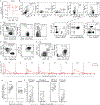
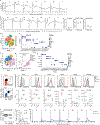


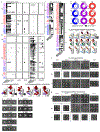
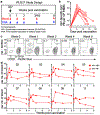
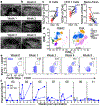


Comment in
-
Both naive and memory B cells respond to flu vaccine.Nature. 2020 Oct;586(7827):34-35. doi: 10.1038/d41586-020-02556-2. Nature. 2020. PMID: 32939083 No abstract available.
References
-
- Corti D et al. A Neutralizing Antibody Selected from Plasma Cells That Binds to Group 1 and Group 2 Influenza A Hemagglutinins. Science (80-.). 333, 850–856 (2011). - PubMed
-
- Francis T On the Doctrine of Original Antigenic Sin. Proc. Am. Philos. Soc 104, 572–578 (1953).
-
- Victora GD & Nussenzweig MC Germinal Centers. Annu. Rev. Immunol 30, 429–457 (2012). - PubMed
Publication types
MeSH terms
Substances
Grants and funding
- AI128821/AI/NIAID NIH HHS/United States
- R01 AI104732/AI/NIAID NIH HHS/United States
- R21 AI139813/AI/NIAID NIH HHS/United States
- HHSN272201400008C/AI/NIAID NIH HHS/United States
- 5T32CA009547/AI/NIAID NIH HHS/United States
- R01 AI104739/AI/NIAID NIH HHS/United States
- T32 AI007244/AI/NIAID NIH HHS/United States
- P30 CA091842/CA/NCI NIH HHS/United States
- UL1 TR000448/TR/NCATS NIH HHS/United States
- U19 AI089992/AI/NIAID NIH HHS/United States
- R56 AI117287/AI/NIAID NIH HHS/United States
- R01 AI128821/AI/NIAID NIH HHS/United States
- UL1 TR002345/TR/NCATS NIH HHS/United States
- 2 T32 AI007244-36/AI/NIAID NIH HHS/United States
- U01 AI141990/AI/NIAID NIH HHS/United States
- AI117287/AI/NIAID NIH HHS/United States
- T32 CA009547/CA/NCI NIH HHS/United States
- HHSN272201400006C/AI/NIAID NIH HHS/United States
- R01 AI117287/AI/NIAID NIH HHS/United States
- 75N93019C00051/AI/NIAID NIH HHS/United States
LinkOut - more resources
Full Text Sources
Other Literature Sources
Medical
Molecular Biology Databases

